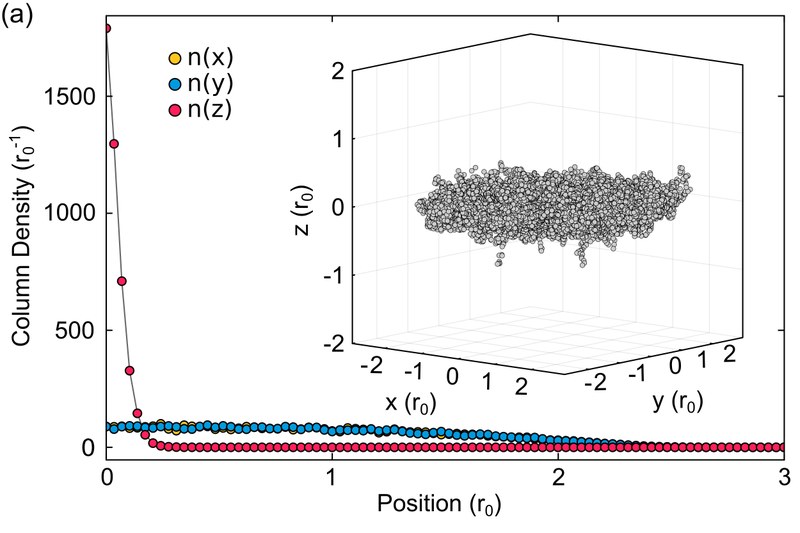First theoretical study of Bose-Einstein condensate of a system of polar molecules developed
Mar 16, 2025
Researchers from the Department of Physics, together with a team formed by several European universities, carry out the first theoretical study of a Bose-Einstein condensate of a system of polar molecules
Last June 2024, the first experimental observation of the Bose-Einstein condensate of a system of polar sodium-cesium molecules appeared in Nature, obtained by the team of Prof. Sebastian Will, from Columbia University in the United States. Although Bose condensation of atoms at ultracold temperatures is routinely carried out in several laboratories around the world, the equivalent with molecules has been elusive, since these have a strong tendency to react chemically when cooled, destroying the system before reaching the low temperatures required to reach the quantum regime of interest. Despite attempts over more than two decades, it has not been possible to achieve bosonic condensation of polar molecules until now. This has recently been possible using an appropriate combination of circularly and elliptically polarized microwave fields, capable of shielding the two-body collision processes that cause the aforementioned reactions.
Leaving aside their possible technological applications, these condensates open new perspectives in the field of Bose condensate physics, since the conditions in which they occur cause the system to exhibit strong correlations at equilibrium, contrary to what happens with atomic Bose condensates. This means that a theoretical description cannot be made using mean-field models based on the Gross-Pitaevskii equation, which is the tool mostly used in this field.
In this sense, members of the Barcelona Quantum Monte Carlo group have recently published in the Journal Physical Review Letters, in collaboration with professors from other European universities, the first theoretical study of these types of condensates. This has been possible using Path Integral Monte Carlo simulation methods, capable of accurately sampling the exact wave function of the ground state of the many-body system. Starting from a potential that contains both the dipolar interaction terms and an anisotropic core produced by the screening potential created by the interaction with the microwave field, it has been possible to obtain an accurate description of the most relevant static properties of the system, showing that it has a natural tendency to form particularly dense droplets compared to what is found in similar situations with atomic species.
The particularly anisotropic shape of these droplets is also characterized, as well as their tendency to form several depending on the initial conditions in which they are created. The work concludes by establishing the phase diagram, where the critical number of molecules that must be present to form these droplets is established, based on the characteristic parameter that measures the relationship between the characteristic dipolar distance and the diffusion length of the total interaction.
Reference:
Langen, T., Boronat, J., Sánchez-Baena, J., Bombín, R., Karman, T., and Mazzanti, F.,
"Dipolar Droplets of Strongly Interacting Molecules",
Phys. Rev. Lett. 134, 053001 (2025).

Share: